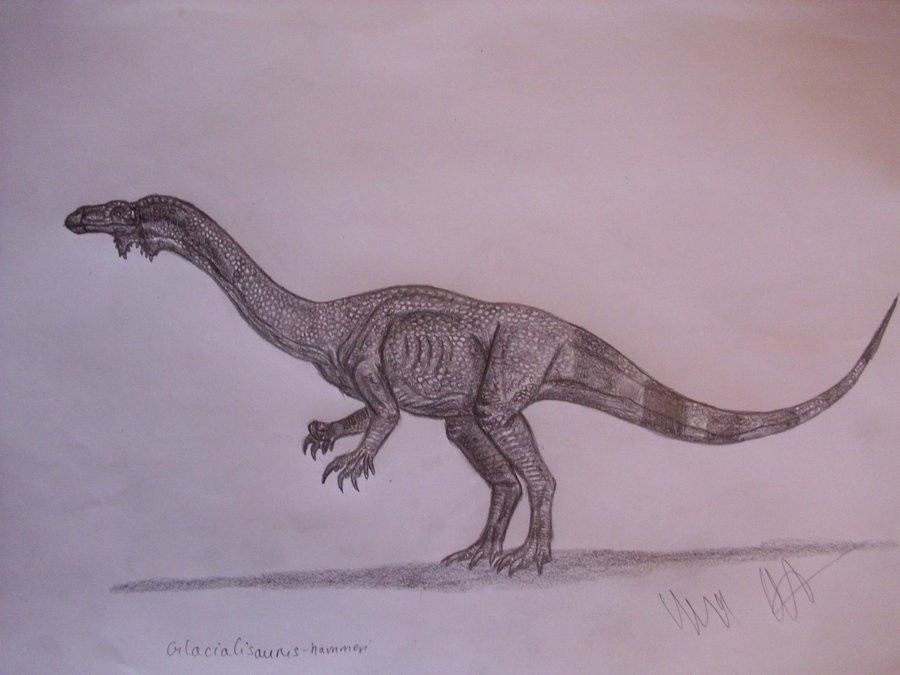
Antarctica wasn’t always covered in ice. There was a time when it was far warmer and wetter than it is now, covered in forests and flowing rivers, and dinosaurs roamed the land. This was during the Cretaceous Period, lasting from 145 to 66 million years ago. It was the age of dinosaurs but would end with a bang when an asteroid hit the Earth and ended their time in the sun.
I mention the sun both figuratively and literally. The dinosaurs were cold blooded reptiles and need the warmth of the sun to survive. Because the fossils of dinosaurs and plants have been found in Antarctica it must have been warm enough and provided enough food to survive. The middle of the Cretaceous period has been described as a ‘Cretaceous Hothouse’ – a hot greenhouse effect caused by increased carbon dioxide in the atmosphere so it was definitely warm enough.
The first Antarctic reptile fossils were found on Seymour Island in 1982. These were marine reptiles called plesiosaurs. They are not dinosaurs but lived at the same time as the dinosaurs.
The first Antarctic dinosaur fossil was found on Seymour Island in 1982. It was an ankylosaur – a heavily armoured and tough dinosaur.
Some of the other dinosaurs so far discovered are:
- A hadrosaur, a duck-billed dinosaur
- The Cryolophosaurus (see image at start of page) – a 25-foot “frozen crested lizard” named after the bony ornamentation on its head which is believed to be for intra-species recognition (so they can recognise each other)
- The Glacialisaurus, an elephant-sized herbivore. Only one specimen has been discovered.

- Sauropodomorphs – large herbivorous dinosaurs, though some were much smaller, about the size of a Labrador Retriever.
- Researchers also found a hypsilophodontid, a pterosaur, a Lystrosaurus, iguanodontid, plateosaurid, mosasaurs and others.
Dinosaur finds were found in the relatively ice-free areas of the rocky regions of some offshore islands and in the Central Transantarctic Mountains. Due to the changing weather and the extreme cold, dinosaur research in Antarctica is very difficult.
This video below gives a pretty good overview of the search for dinosaur fossils in Antarctica and check out some of my other dinosaur pages.
